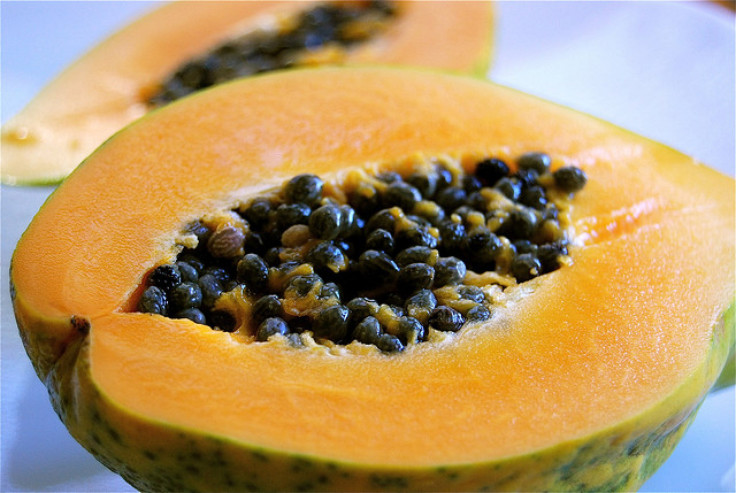GMO Oranges, Papayas, Potatoes: A Look At Foods Modified To Resist Disease

Debates about the safety of genetically modified organisms often lump all engineered crop plants or animals under the blanket “GMO” label. But not all GM plants are the same. GMO encompasses not just salmon engineered to grow quicker or corn that makes its own pesticide, but also organisms that were altered with the express purpose of trying to ward off diseases that threaten the food supply.
On Sunday, the New York Times published an exhaustive examination of Florida orange growers’ efforts to combat an insidious bacterial disease known as citrus greening. The most promising solution thus far is an orange tree that’s been endowed with a gene from spinach. The gene itself makes a protein that attacks harmful bacteria.
One of the most commonly cited GMO “success stories” is the Rainbow papaya. The Rainbow papaya variant is a crossbreed between the unmodified Kapoho and the SunUp papaya, which was created in part by Cornell University researcher Dennis Gonsalves. The SunUp is resistant to the papaya ringspot virus, which is spread by feeding aphids and which began devastating Hawaiian papaya farms in the 1990s. Plants, once infected, do not recover.
The SunUp papaya was made by taking pieces of the ringspot virus itself and inserting it into the papaya genome. It’s similar to how a vaccine uses part of a virus or bacteria to confer immunity. Federal officials ran a battery of tests on the Rainbow papaya, looking for any potential allergic effects, or differences in nutrition as compared to unmodified papayas, and eventually cleared it for commercial planting in 1998.
Without the Rainbow papaya, “there’s no papaya industry,” Gonsalves told the Hawaii Tribune-Herald in June. “Simple as that.”
GMO skeptics still look askance at the Rainbow papaya, fearing some long-term effect the fruit could have on human health, or that the GM papaya could contaminate the organic fruits grown next door. Monsanto does hold a patent on the technology used to develop the Rainbow papaya, but the company has licensed that patent to the Hawaiian papaya industry.
But otherwise, acceptance of the Rainbow papaya is slowly growing. Japan, which had resisted importing genetically modified papaya since its inception, approved its first shipment of Rainbow papayas in December 2011. In 1996, before the ringspot virus struck and the Rainbow papaya was introduced, Japan bought $15 million in Hawaiian papayas every year; sales dropped to $1 million by 2010.
Other GM crop development aimed at combating plant diseases have met with less success. Global chemical giant BASF was looking to field test its genetically modified potato Fortuna in Europe, but dropped its bid this past February due to “uncertainty in the regulatory environment and threats of field destructions.” The Fortuna potato was designed to resist late blight, a devastating disease that was behind the Irish potato famine of the 19th-century. Scientists had grafted blight resistance into the cultivated potato by adding two genes from the wild potato.
© Copyright IBTimes 2024. All rights reserved.











